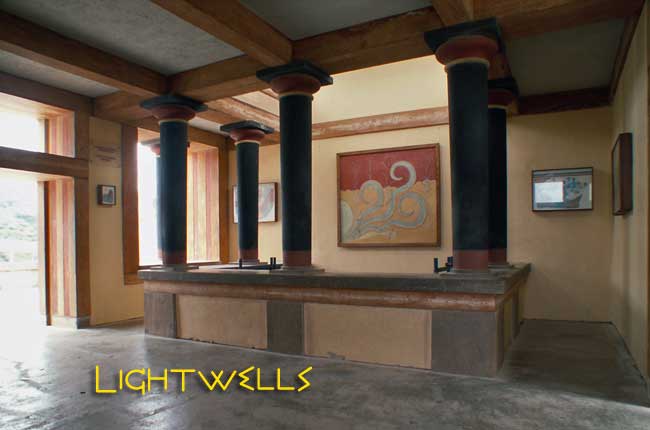
Lightwells are open shafts that run the full height of a building, designed, according to Evans, to bring light and fresh air into the interior of Minoan palaces and other large buildings. The need is obvious, especially in those parts designated as residential units, but, if that was the case, why are the majority of lightwells found next to open areas, by courtyards or the edge of the building, where windows would have served just as well? Evans suggest that lightwells offered the occupants more privacy.
The shaft generally terminated in shuttered door systems (polythyrons) or porticoed balustrades on one or more sides. The floor was generally made of terrazza ( sort of cement made with small pebbles), but in some cases, such as the throne room at Knossos, there was a lustral basin at the bottom. All of these features are now associated with religious activity. In this context, it is strongly possible that they served to permit observation of the rites from above.
